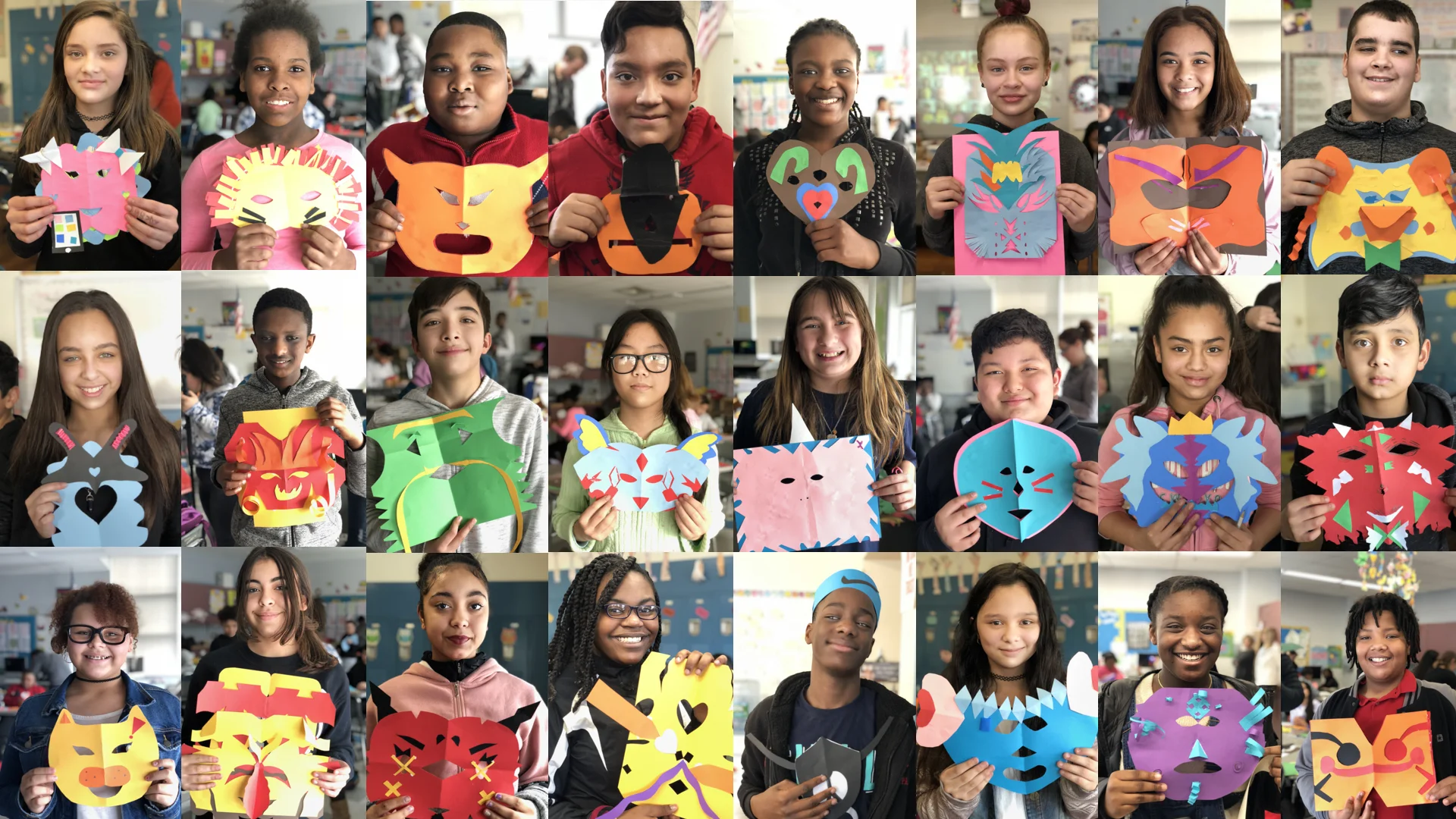As a child I often visited my father’s high school English classroom. The most striking thing about it was his bulletin board. In my elementary school in Indiana, I was used to seeing bulletin boards decorated by the teachers. Before the opening of school they painstakingly prepared a beautifully laid out design with lettering and pictures, perhaps around a particular theme. My father’s bulletin board was different. He let the students bring in practically anything they wanted and hang it—there were layers upon layers of cartoons, comic book characters, and poems. It was a mess, but it was theirs.
When I visit classrooms I often see teacher-prepared bulletin boards, or in middle and high schools, “inspirational” posters that fill the walls. Rather than inspire, I feel like these posters say, "This is school business as usual."
Last summer I heard retired educator Wanda Lincoln speak to elementary school teachers in Vero Beach, Florida. She said, "When we as teachers make sure the room is perfect at the beginning of the school year, we are sending the message that the classroom is ours, not the students." She encouraged teachers, "Begin with walls that are blank—nothing on them at all!"
SmART Schools is an organization in New England that integrates the arts into daily learning. I was invited to visit 6th grade classrooms in the Everett Public Schools in Massachusetts and model what an arts-integrated class might look like. I partnered with one of our teachers at Habla, Tommaso Iskra De Silvestre. Inspired by Wanda's talk, we asked the question, “How can we help students transform their classrooms?"
We wanted to get to know the class a bit before starting so we asked, "How many of you . . .
- know who the Black Panther is?
- have seen the movie?
- speak more than one language? Spanish? Portuguese? Haitian Creole/French? other languages
- like to make things with your hands—paint, draw?
We then introduced the students to kennings. Defined by the dictionary, a kenning is a compound expression in Old English and Old Norse poetry with metaphorical meaning, e.g., oar-steed = ship.
Examples of kennings (students loved guessing these—find even more here):
- storm of spears—battle
- forest walker—bear
- land bones—rocks
- arm serpent—bracelet
- head forest—hair
- tongue land—mouth
I first learned about kennings from Boston-area artist and educator Regie Gibson. In a workshop we piloted for teachers at the NEAL Teacher Institute, Regie had teachers create Kennings that related to their personal identities. Borrowing the same approach, Students began by brainstorming their own word bank of nouns and verbs. When their papers were filled, they practiced at combining two words to create a kenning representing themselves. In order to create a kenning, we reviewed how to add the suffix "ing" on to a verb to form an adjective (or adjectival participle to use the formal term). We also looked at how verbs can be transformed into nouns by adding the suffix "er." Without any formal grammar lesson, students naturally began manipulating, transforming, and combining words.
Some of the examples students came up with are:
- Panda Sleeper
- Laughing Kitty
- Jumping Singer
- Reading Wolf
- Breathing Books
- Exclaiming Pencil
Mask Making Introduction
We asked students the question, "How do masks both hide and reveal us?" We examined superheroes who are both defined, and hidden, by masks. For instance we know Bruce Wayne was frightened by bats when he was young, and later he adopted the mask of a bat, in order to both confront his own fears and to frighten the bad guys. We asked the students, “What are the characteristics of a Panther?” They answered “powerful, stealthy, quiet, fierce, noble, aggressive.” We then talked about why the king of Wakanda, T’Challa, might be represented by the mask of the panther.
Black Panther's first appearance in a comic book in 1966.
Black Panther in his latest Marvel movie.
Then, as a class we looked at masks in different cultural contexts and explored how they both hide and reveal us.
Lucha Libre masks from Mexico
Dia de los muertos, Mexico
Symmetrical Mask-Making
We were inspired by Chicago teaching artist Cynthia Weiss's workshop on mask-making and the book think and make like an artist (pictured below). We demonstrated how to simply fold a paper in half, and like Matisse, begin “drawing with scissors.” When the paper is opened it reveals the first layer of a mask. We then cut up more paper in a similar manner and added layers on to the first. We showed how scraps from the table could be added to the masks for three dimensions.
Tommaso coaches students while George Washington observes.
Students began to fold paper in half, cut out symmetrical shapes, and create the first layer of their masks.
To create three-dimensional masks, students added layers of additional symmetrical designs. They also glued on scraps left behind after the initial cuttings.
Students then found blank space on the walls to hang their kennings and masks. They transformed the lockers, walls, and windows into colorful spaces filled with their own art-objects and words.
6th Graders and their Masks
This project with students in Everett, MA was a SmART Schools initiative demonstrating how the arts can be integrated into the daily life of classrooms.
Thanks to my collaborating teacher Tommaso from Habla and to the teachers, administrators, and students in the Everett Public Schools.


















